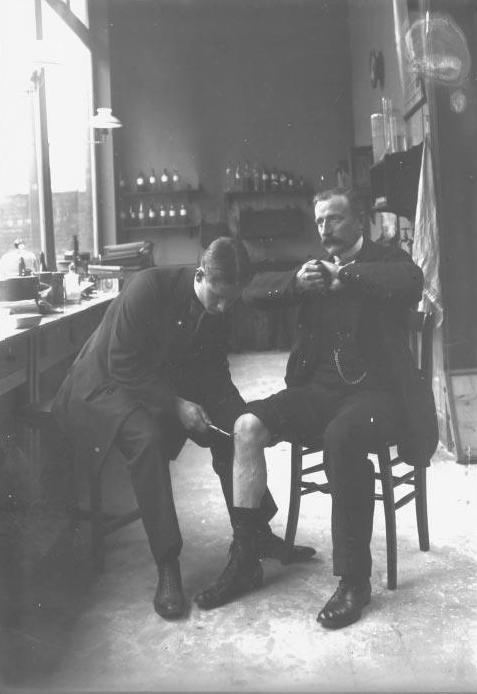 | ||
The Jendrassik maneuver is a medical maneuver wherein the patient clenches the teeth, flexes both sets of fingers into a hook-like form and interlocks those sets of fingers together. The tendon below the patient's knee is then hit with a reflex hammer to elicit the patellar reflex. The elicited response is compared with the reflex result of the same action when the maneuver is not in use. Often a larger reflex response will be observed when the patient is occupied with the maneuver, as the maneuver may prevent the patient from consciously inhibiting or influencing his or her response to the hammer. This effect was first observed in the late 19th century by Hungarian physician Ernő Jendrassik, whom it was named after.
This maneuver is particularly useful in that even if the patient is aware that the interlocking of fingers is just a distraction in order to elicit a larger reflex response, it still functions properly.
The maneuver can also be used to distract patients when performing other tests or procedures and any suitable distraction may be used; for example when looking for Romberg's sign.
